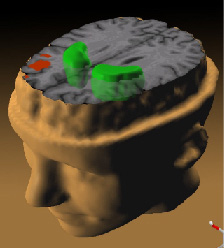Firmly clenching the right hand for ninety seconds when you are trying to memorise something, followed by an equivalent left hand clench when you want to recall the information again,  could improve your chances of success, new research has revealed.
could improve your chances of success, new research has revealed.
The basis of the study was work done in the 1990s by the psychologist Endel Tulving, who showed that when a subject attempts to store a new fact, the left frontal lobe becomes significantly more active. And when a previously-stored memory is accessed, the reverse is true with higher levels of right frontal brain activity.
Now, Montclair State University scientist Ruth Propper and her colleagues have asked whether this phenomenon, which Tulving dubbed "HERA" - short for hemispheric encoding retrieval asymmetry, can also be manipulated to improve memory formation and retrieval.
Writing in the journal PLoS One, the Montclair scientists asked 51 right-handed volunteers to squeeze a 5cm pink ball in either their right or left hands for a total of ninety seconds before they were asked to memorise a list of 36 words, displayed for 5 seconds each, on a computer screen.
Since the left side of the brain controls the right hand, and vice versa, performing clenching movements like this is known to be a powerful way to increase the activity in the opposite frontal lobe.
After memorising the word list, the subjects then repeated the ball-squeeze before attempting to write down as many of the words as they could.
The researchers tested each of the possible hand combinations (right first, left on recall, right on both, left on both and left first then right on recall) as well as including a control group who did no ball squeezing.
Totting up the words recalled correctly, those who used their right hand to squeeze the ball, activating their left brain, before they tried to memorise the words performed significantly better than the other conditions, recalling 10 words correctly compared with between 5 and 7 for the other subjects.
Surprisingly, the performance was only marginally (and non-significantly) better than the non-squeezing controls, but the team point out that this probably reflects the small sample size. They also highlight that the study was done only using words, so an even larger effect might manifest if pictures were used instead.
So now all you have to do is try to remember to squeeze your right hand when you want something to stick in your memory, and your left hand to recall it!










Comments
Add a comment